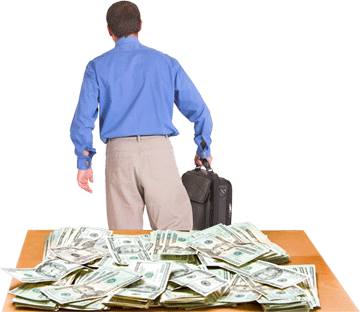Don't leave money on the table when selling your investment property
 Paul Kondakos | Posted on
Paul Kondakos | Posted on  Wednesday, November 16, 2011 at 11:19AM
Wednesday, November 16, 2011 at 11:19AM  The point of purchasing an investment property is to make money. Ergo the term "investment" property. However, all too often I see seasoned real estate investors making the same mistake or at the very least, overlooking a simple accounting maneuver that can help them get thousands of dollars more on the sale of their investment property.
The point of purchasing an investment property is to make money. Ergo the term "investment" property. However, all too often I see seasoned real estate investors making the same mistake or at the very least, overlooking a simple accounting maneuver that can help them get thousands of dollars more on the sale of their investment property.
Savvy investors buy investment properties based on their ability to generate income. Simplified, this is a function of income minus expenses which leaves us with the net income of the property. The net income is then used to determine the "cap rate" of the property, which is one of the most commonly used metrics when assessing the viability of an investment property.
When assessing the value of an investment property, investors / real estate agents tend to look at the average cap rate for the surrounding area and then work backwards to determine the value of the subject property. For example, say the average cap rate for a multi-unit residential property in Toronto is 5% and I want to sell my building (located in Toronto) which generates a net income of $50,000. The simple math says that if I use a 5% cap rate to value my building, it would have a value of approx. $1,000,000. Simple math.
Now, with all the basics out of the way, its time for the good stuff that will help you make more money on the sale of your investment property. In order to determine the net income of a property, you take the income, minus the expenses. This is where many investors tend to overlook the power of the multiple. When preparing for a sale, there are a number of very simple things an owner can do to prepare for the sale of the property that can literally add thousands to tens of thousands of dollars to the value of the property. For any real estate agents out there, this simple advice will net you a client for life.
Property Value Boost #1 - RENT INCREASES
- Ensure that you have given out all rent increases under the allowable guidelines. (3 months notice is typically required)
Property Value Boost #2 - BUY RENTED EQUIPMENT
- Buy out any rented equipment outright prior to the sale of the property. All too often I have seen (and purchased) investment properties that have rented items in their expense statements. Why is this bad you ask? The power of the multiple will show you why below.
Power of the Multiple
Using the example above of a multi-unit residential property located in Toronto with a 5% cap rate, you will see below how relatively small increases in income and small decreases in expenses can lead to SIGNIFICANT appreciation of your property instantaneously.
Let's look at increasing the rent of just one unit which currently rents for $800/month. The allowable rent increase guideline in Ontario is 3.1% for 2012. As such, you can increase the rent of this unit to $824.80/month. (You may be tempted to round it to $820 or $824, but that would be a mistake as every penny counts.) You have now increased the income that this one unit generates by $24.80/month or $297.60 on an annulized basis. It doesn't seem like much until you put the power of the multiple to work. $297.60 in annual income is worth $5,952.00 in market value based on a 5% cap rate. Why would you leave almost $6,000 on the table when preparing for a sale when all you have to do is issue a rent increase notification? And that is just one unit. How about if you have 6 units that are due for a rent increase? Almost $36,000 in found money. Not bad!
Now, lets look at the other side of the equation, the expense statement. It is very common for multi-unit residential properties to have some type of rented equipment on site. This could include rented washer/dryer, rented heating equipment, etc... Let's take washer/dryer as they are the most common rented equipment found in investment properties. The typical washer/dryer combo rents for approx. $60/month or $720.00 on an annulized basis. Again, it may not seem like much until you apply the power of the multiple. If you were able to remove that annual expense of $720.00 from your expense statement, it would add approx. $14,400 in market value based on a 5% cap rate. As long as you can buy out your washer and dryer for less than $14,400, you come out ahead. Odds are you can buy the pair for well under $3,000 (even with breakage fees) and still come out WAY ahead.
So let's recap. You raise one rent and buy-out a washer and dryer and you are now up approx. $16,000. Not bad for something that would take you an hour or two of your time.
When you prepare your next property for sale, make sure you take the power of the multiple into account.
Author:
Paul Kondakos, BA, LL.B, MBA, Real Estate Investor & Property Manager

Reader Comments